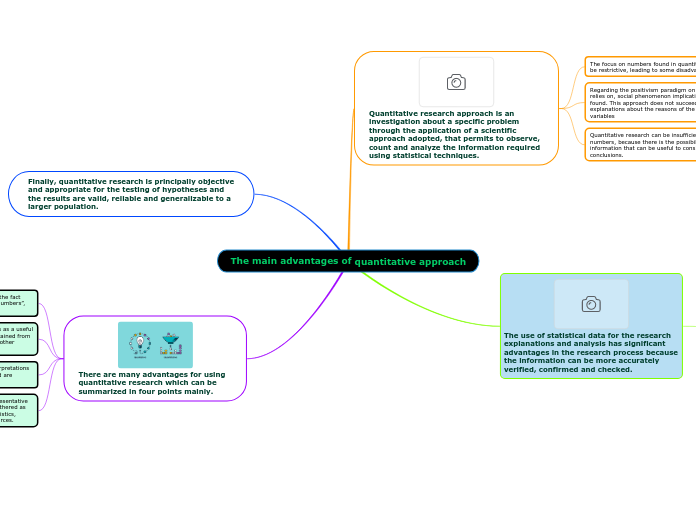The main advantages of quantitative approach

Quantitative research approach is an investigation about a specific problem through the application of a scientific approach adopted, that permits to observe, count and analyze the information required using statistical techniques.
The focus on numbers found in quantitative research can also be restrictive, leading to some disadvantages.
Regarding the positivism paradigm on which this approach relies on, social phenomenon implications are nowhere to be found. This approach does not succeed in providing enough explanations about the reasons of the effect of certain variables
A second limitation is that positivism paradigm neither describes how reality is “shaped” nor refers to how persons “interpret” their behaviors.
Quantitative research can be insufficient concentrating only on numbers, because there is the possibility of missing information that can be useful to consider for making final conclusions.

The use of statistical data for the research explanations and analysis has significant advantages in the research process because the information can be more accurately verified, confirmed and checked.
It involves not only an investigational plan, but also measurements that enable researchers to know how to interpret the results obtained, so such results will be more reliable, definitive and standardized
Finally, quantitative research is principally objective and appropriate for the testing of hypotheses and the results are valid, reliable and generalizable to a larger population.

There are many advantages for using quantitative research which can be summarized in four points mainly.
Collect reliable and accurate data: Because of the fact that data is “collected, analyzed and presented in numbers”, the outcomes obtained will be really reliable.
Extensive range of data analysis: With statistics as a useful tool, it also permits a broader collection of data obtained from bigger sample groups, which can be a limitation in other situations.
Eliminate bias:There is no possibility for own interpretations or preconceptions of results. The outcomes reached are statistical. Thus, they are verifiable.
Quick data collection: Data is gotten from a representative group of a population. The methods how data is gathered as well as the manner how it is analyzed by using statistics, saves not only time, but also lessens wasting resources.
